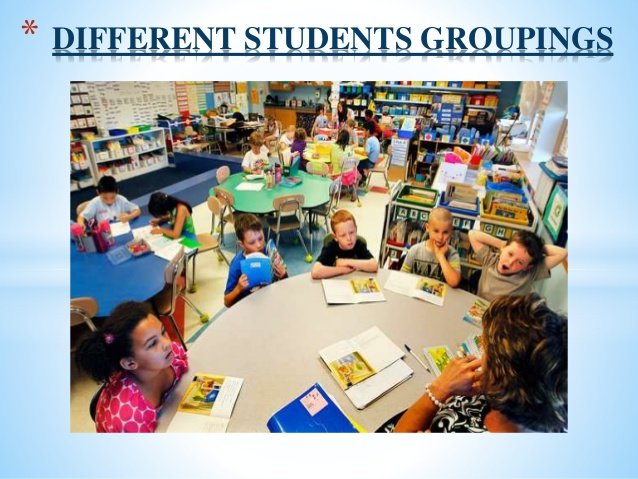How To Apply Team Game Tournament in Your Classroom : Tips for Teachers
Hello educators, today’s post of my article is about a learning model called Team Game Tournament (TGT). Basically, Team Tournament Game is one of cooperative learning types. This model of learning can be applied in various classrooms levels, such as elementary school, junior high school, senior high school, or even university classes. In addition, this model also can be applied in various lesson you are teaching in schools. However, this model is quite dynamic to use in your classroom.
The application of this learning model emphasizes the learning process in which students work together with their peers in the classroom. Typically, students are divided into groups of 4-6 students. When distributing students into groups, teachers should consider the diversity of group members such as gender, race and intelligence level.
The teacher's task is to present the material to the students and explain briefly or as a facilitator. Then, students with their group peers work together and discuss the topics they are studying. Each member of the group is accountable to the other members, meaning they must explain the material they understand to their peers until they all understand before they ask to the teacher.
The following are the learning steps in the class that apply Team tournament Group which is suggested by Slavin (2002) where the learning process is divided into 4 learning stages, namely class presentation, teamwork, game and team recognition
1. Class presentation
In the early stages of learning, teachers make presentations to students on topics learned by students. Typically, this presentation is done with a lecture model where the teacher presents the material and the students listen to what the teacher is saying. Students are encouraged to really listen to the teacher's presentation because it is very influential on their performance within their later group. The more students understand what teachers say, it is easier for them to work in groups at the second stage.
2. Teamwork
After the teacher presents the topic of learning and other rules related to the group, the teacher distributes the students into groups of 4-6 students. As I said before, the teacher should consider heterogeneous group members that include a level of intelligence, gender, and race. This means, each group should consist of students who have high and low intelligence, male and female, and from different backgrounds. The division of students into groups aims to make them understand the deeper material through teamwork and discussion with their peers. Students with higher intelligence are expected to help other peers through the teamwork and discussion. So that, each member of the group is responsible for the other members.
At this stage, students are encouraged to discuss the problems that arise, compare each of the answers given by group members and encourage them to solve problems and draw conclusions agreed upon by them together.
3. Game
In the game stage, the teacher can apply the game according to the lesson he/she teach. Typically, games are held in conjunction with testing of a student's ability to understand the material that has been presented by the teacher and discussed in their group. For assessment in the game, the eacher usually give scores for each group that successfully answers a question or completes a game well. Then, based on the overall scores obtained by the groups, teachers sort groups to determine the best group.
4. Team recognition
In the last stage, after the game is over and the teacher calculates the score of each group, the teacher rewards the best group. Based on the scores obtained, teachers can categorize them into the best group, the great group and the good group. Then, students are rewarded by the teacher for their achievement based on teamwork. In this, the teacher may give a gift for students, appreciation, or additional scores on their assignment.
In conclusion, this learning model is worth applying in the classroom where you teach because it helps students to team up and foster responsibility for others, and become autonomous learners. In addition, this learning model also helps students who have lower ability to learn with their peers who have a higher ability so as to foster social interaction among students in each group.
References
@affiedalfayed
(a teacher and writer)

USE #steemiteducation TAG
TO SUPPORT EDUCATIONAL CONTENTS AND RESOURCES




Gute Arbeit an den Fotos. Sie sprechen mich an. Wer würde nicht gerne um echtes Geld spielen und sein Geld zurückbekommen, wenn er all seine Wetten verloren hat? Sie können eine Rückerstattung verlangen, wenn Sie möchten. Es ist jedoch nicht so einfach, wie es zunächst scheint. Es wird lange dauern, und Sie werden höchstwahrscheinlich rechtliche Hilfe benötigen. Leider kann niemand versprechen, dass Ihr Fall erfolgreich sein wird. um mehr über Online-Glücksspiele zu erfahren Check This Out Sie sollten nicht Zehntausende von Euro in ein Online-Casino investieren, um eine Rückerstattung zu erhalten. Die beste Strategie ist, verantwortungsvoll zu spielen. Stellen Sie sicher, dass Sie mit den Grundlagen des Bankroll-Managements vertraut sind. Spielen Sie immer mit Geld, das Sie beim Spielen verlieren können.
If you want to play your favorite games in a safe and secure atmosphere, be sure you're doing it at a legitimate, licensed live NJ casino . It's another layer of protection against malicious websites. Also, before you play, you should verify that the casino allows your chosen method of payment. Live casinos that have current and genuine gaming licenses are safe bets. Moreover, they provide top-notch games and have a respectable standing in the industry.
Good Topic to discuss
I was just remembering my childhood while looking at this thread. Well, I can play these games now but I love playing casino games now and even you could try these out. You will like it for sure. If anyone has suggestions for me then also let me know, please.